-
x
Description
| This is the short joined form of the famous "Penis Cactus" a strong plant that branches at the base and can slowly grow up to 25 (-40) cm tall. Family: Cactaceae (Cactus Family) Scientific name: Echinopsis bridgesii forma mostruosa inermis (Clone A short joined type) Origin: Garden origin (Nursery produced cultivar) Common Name: Some people call this plant the "Penis plant" or "San Pedro penis", it is also sometimes described as "The Pornographic Cactus’ or the "The More Sensual of Cacti". The German name for this cultivar "Frauenglück" is more poetic than its English equivalent; it translates as "Women's Pleasure". Synonyms: Echinopsis lageniformis forma mostruosa inermis
| |
| Description: This is the clone A (The short jointed one), one of the two Montrose form o T.bridgesii It is a clustering monstrous cactus with prostrate growth habit that branches at the base and can slowly grow up to 25 (-40) cm tall. Stem: Composed by short upright sections that branches avidly up to 10-15 (-20) cm tall by 5 cm in diameter, light glaucous green, with only a few areoles and spines in the basal portion. The upper part of the stem is cylindrical, smooth without areoles and resemble a penis. The lower part is spiny and shows a tendency to form ribs. Spines: Honey-coloured to brown, located on the few basal nodes in groups of up to 4. They can grow up to 4–7 cm long. Flowers: Not known. NOTE 1: There exist several mutant varieties of this T.bridgesii that are highly prized by cactus impassioned. These include a cristate variety, two variants of monstrose growth (Clones A and clones B), Of the monstrose varieties, one (Clone B) is often known by the name Penis Plant. NOTE 2: The chemical composition of the 'Penis Plant' is supposedly the same as that of the typical T.bridgesii. | |
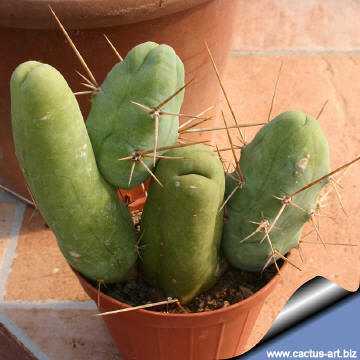 | 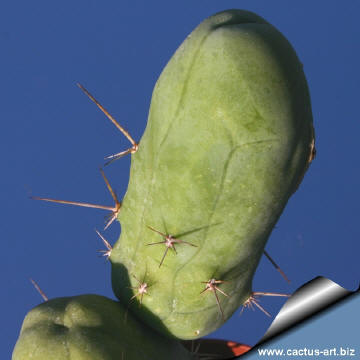 |
| Cultivation: It is very easy to grow and cold hardy as low as -12°C (or less). Need a fertile, well drained soil mix. Water the plants well and allow them to dry before watering again. This cultivar seems to do better with a little more water than most cacti. In fact, its cultivation requirements are really more like 'normal' plants than most other cacti. During the growing season fertilize them monthly with a balanced fertilizer Sun Exposure: Outside full sun, but during hot summers, the cactus are subject to sun burning, so grow them in light shade, inside needs bright light, and some direct sun.. During winter month, put them in a cool luminous place and encourage them to enter winter dormancy by withholding water and fertiliser over the winter as they will etiolate, or become thin, due to lower levels of light. They are susceptible to fungal diseases if overwatered, but are not nearly as sensitive as many other cacti, especially in warm weather. They tend characteristically towards black rotted spots unless watering is moderate and only in hot weather, if kept damp through cold periods, they will invariably suffer. Propagation: It can easily be multiplied from cutting. Single sections are taken off, dried and rooted. | |
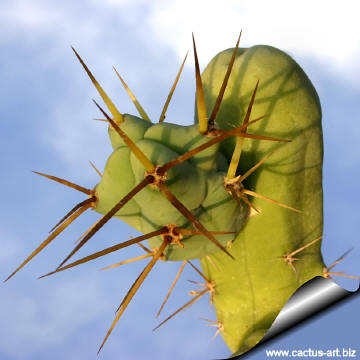 | 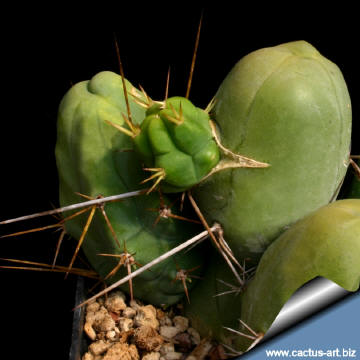 |
| The new branches arise from within the body of the mother plant breaking the epidermis to come out. | |
| . | |

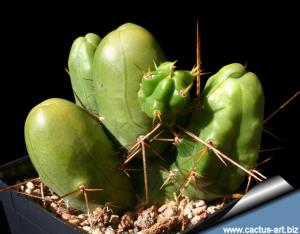
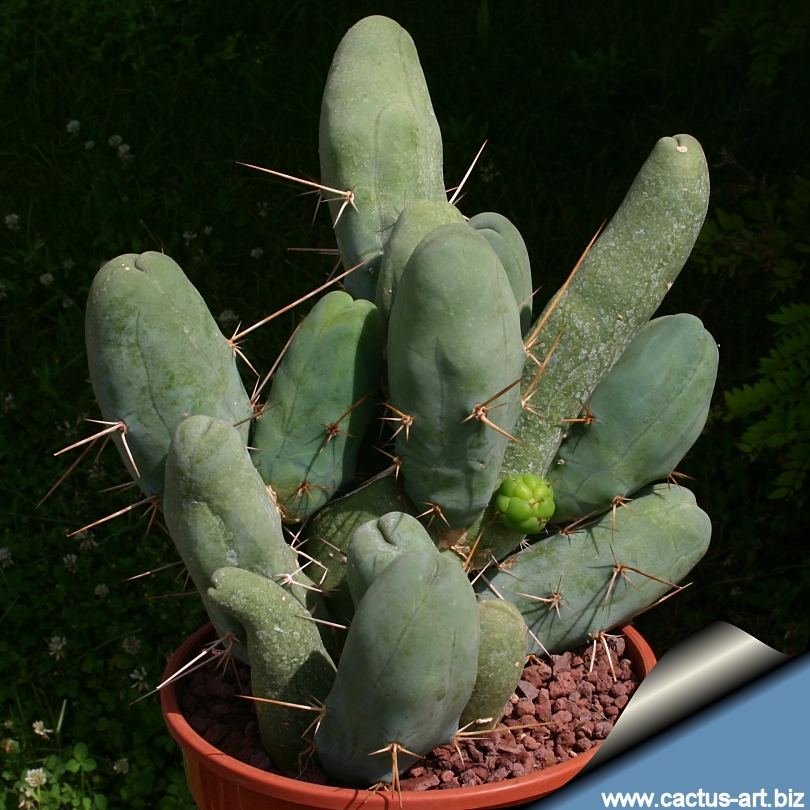 The Trichocereus bridgesii mostruosa inermis( clone A short type ) is often known by the name "Penis Plant", it is much slower growing than the standard form of the species.
The Trichocereus bridgesii mostruosa inermis( clone A short type ) is often known by the name "Penis Plant", it is much slower growing than the standard form of the species.